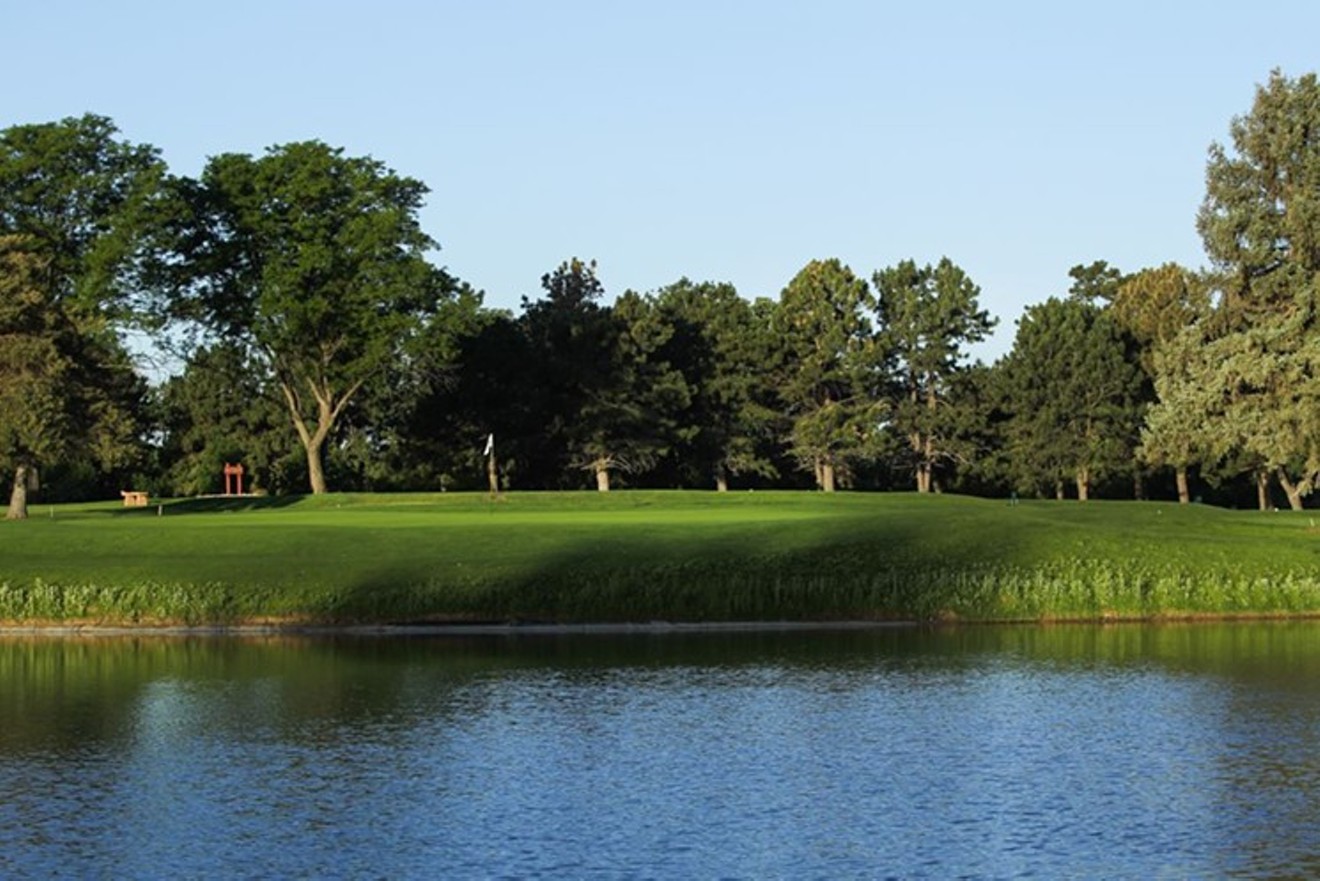At issue is the Platte to Park Hill Stormwater Systems program, which city engineers say is needed to protect northeast Denver neighborhoods from flooding during a hundred-year storm event. But opponents contend that the primary beneficiary of the improvements is the I-70 expansion through east Denver planned by the Colorado Department of Transportation, which is helping to fund the drainage work. The project also offers flood relief for industrial areas flanking the highway and targeted for future development, as well as for one of Mayor Hancock’s legacy projects: a billion-dollar makeover of the National Western Complex.
Neighborhood groups have objected to several components of the project, including a fifteen-block open channel to be dug through a Superfund site in the Cole neighborhood and an expanded outfall at Globeville Landing. The lawsuit, brought by several citizen plaintiffs, deals specifically with the impact on the golf course, which would be closed for two years and lose hundreds of trees as it's "reconfigured" to accommodate storm runoff. The suit contends that the project would convert park land to non-park uses, in violation of the city charter.
"It's a lot easier to hug a tree if it's only an inch in caliber, isn't it?"
tweet this
City officials have tried to portray the dispute as much kvetching over little. The golf course will still be a golf course when it reopens, they point out, and the charter doesn't preclude a park serving more than one purpose. But the citizens argue that the impacts on the tree canopy, on bird habitat, on the historic design of the course, its views and character will be so severe — all in the service of a highway project — that it raises fundamental questions about the priorities of the city's leadership.
That theme was sounded again and again in the examination on August 22 of Allegra "Happy" Haynes — former Denver City Council member, current school board member, Hancock loyalist, deputy mayor and current manager of Denver Parks and Recreation. Under somewhat tense questioning by plaintiffs' attorney Aaron Goldhamer, Haynes seemed to have less than an ideal grasp of how many trees would be lost, key details of the new design, what opinions the DPR citizens' advisory board (which she didn't consult) might have about the project, or even the current usage of the course (more than 50,000 rounds of golf a year), which is one of the few golf facilities nationwide to be found in the heart of an urban area the size of Denver. And, yes, she conceded, helping a highway get built isn't a park purpose.

Parks manager Allegra "Happy" Haynes has referred to herself as Denver's "tree-hugger in chief."
Denver Public Schools
"I guess it's a lot easier to hug a tree if it's only an inch in caliber, isn't it?" Goldhamer quipped.
"Very funny," Haynes snapped.
The exchange wasn't all that funny, but it underscored the larger legal issue looming over the case. Denver has a long history of mayors committed to enhancing the city's green places, from Speer to Webb. The Hancock administration has tried to present itself as greener than a certain jolly giant, but its record on park preservation has been miserable; as far as park defenders are concerned, Hizzoner has treated some of Denver's prized open spaces as little more than cheap land available for development schemes, dating back to the Hentzell Park land swap (which another Denver judge described as the work of "a less than transparent City administration") and the City Loop fiasco, to the Overland Golf Course concert flap and the current stormwater project, which has also led to the bulldozing and eventual "reconfiguring" of Globeville Landing Park.
Just when does a park stop being a park? That is something Judge Goldberg is going to have to figure out after the trial concludes this week.












